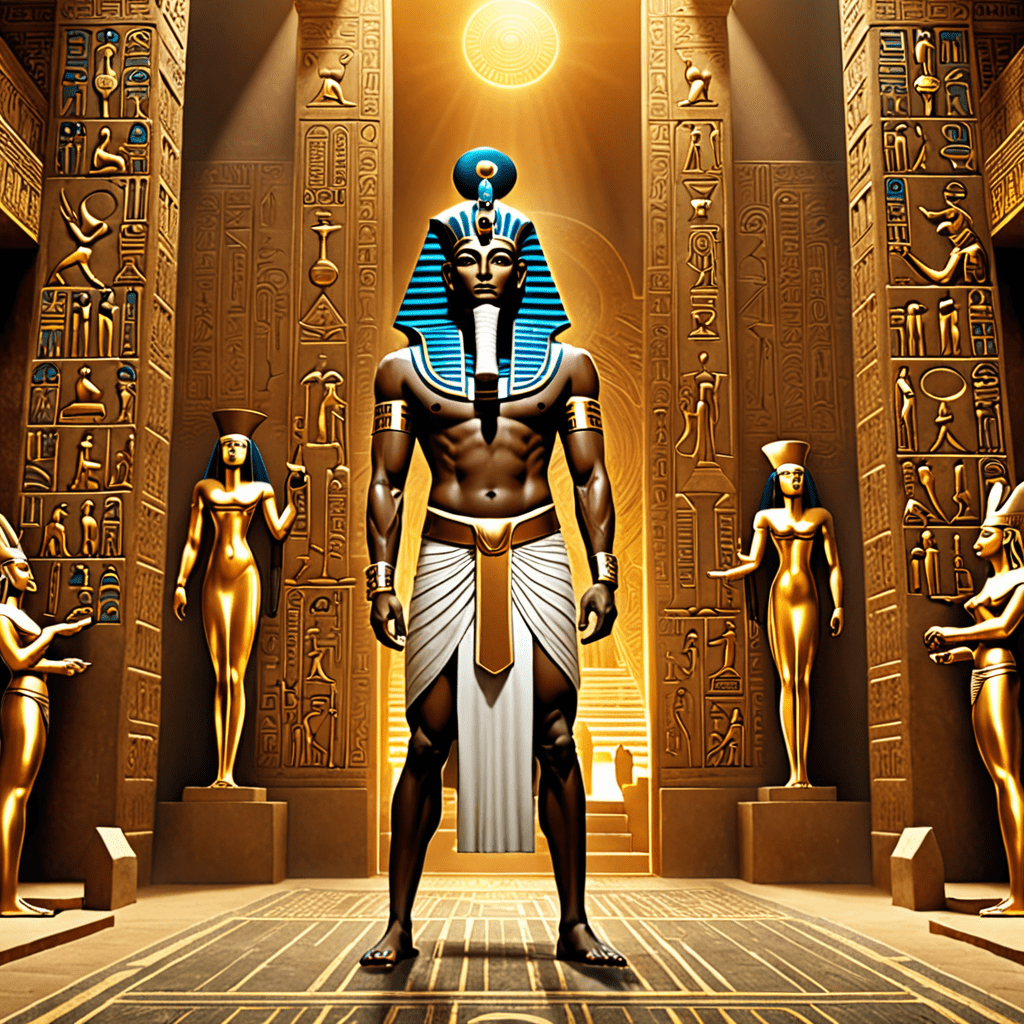The Myth of Osiris and Isis in Egyptian Mythology
Egyptian mythology is filled with captivating tales of gods and goddesses, and one of the most renowned stories is that of Osiris and Isis. Let’s delve into this ancient myth to uncover the rich tapestry of Egyptian beliefs and traditions.
The Story of Osiris and Isis
Osiris, the god of the afterlife, death, fertility, and resurrection, ruled over the realm of the dead. His sister-wife, Isis, was the goddess of magic, fertility, and motherhood. The story goes that Osiris was the envious brother of Set, the god of chaos. Set tricked Osiris into entering a chest, which he then sealed and threw into the Nile, drowning Osiris.
Isis, devastated by her husband’s death, searched tirelessly for his body. She eventually found it, but Set, in a fit of jealousy, tore Osiris’s body into pieces and scattered them across Egypt. Undeterred, Isis, with the help of her sister Nephthys, gathered Osiris’s body parts and resurrected him temporarily to conceive their son, Horus.
The Symbolism of Osiris and Isis
The story of Osiris and Isis holds profound symbolism within Egyptian mythology. Osiris represents the cycle of life, death, and rebirth, mirroring the annual flooding and receding of the Nile, which brought fertility to the land. Isis embodies the powerful forces of magic, healing, and motherhood, symbolizing the nurturing and protective aspects of femininity.
Osiris’s death and resurrection symbolize the eternal struggle between order and chaos, life and death. The rebirth of Osiris through Isis’s magic underscores the importance of regeneration and continuity in the natural world.
Legacy of Osiris and Isis
The myth of Osiris and Isis had a profound impact on ancient Egyptian spirituality and religious rituals. The cults of Osiris and Isis were popular throughout Egypt, with devotees seeking their blessings for fertility, protection, and prosperity.
Moreover, the story of Osiris and Isis influenced the concept of judgment and the afterlife in Egyptian beliefs. Osiris, as the god of judgment, was depicted weighing the hearts of the deceased against the feather of Ma’at, the goddess of truth and justice, to determine their fate in the afterlife.
Even today, the enduring legacy of Osiris and Isis can be seen in art, literature, and pop culture, with their story continuing to inspire awe and fascination.
FAQ about The Myth of Osiris and Isis in Egyptian Mythology
What is the myth of Osiris and Isis?
The myth of Osiris and Isis is a central tale in ancient Egyptian mythology. It revolves around the brother and sister deities, Osiris and Isis, who were also husband and wife. Osiris was the god of the afterlife, while Isis was the goddess of magic and motherhood in Egyptian belief.
What happens in the myth?
In the myth, Osiris is betrayed by his brother Set, who is jealous of Osiris’s power. Set kills Osiris and scatters his body parts across Egypt. Isis, with her magical powers, searches for and reassembles Osiris, except for his phallus which was eaten by a fish. Isis then conceives a child, Horus, with the resurrected Osiris, who grows up to avenge his father’s death by defeating Set.
What themes does the myth of Osiris and Isis explore?
The myth explores themes of death, rebirth, family, love, and the eternal struggle between good and evil. It reflects the ancient Egyptians’ beliefs in the afterlife, resurrection, and the importance of familial bonds and justice.




